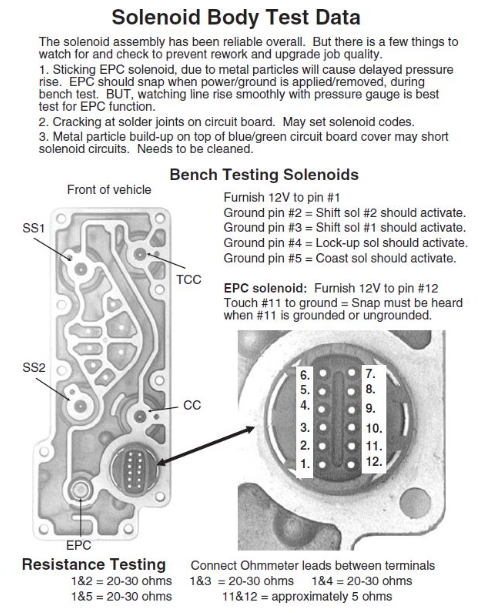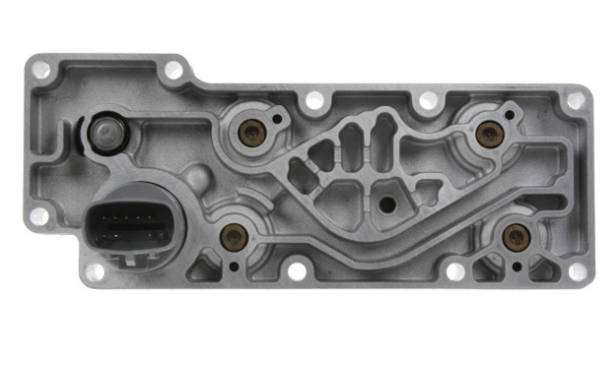Recognizing the symptoms of a bad solenoid pack E4od ensures that any large vehicle with Ford’s E4OD electronically controlled transmission runs smoothly. This article serves as a guide for detecting malfunctioning solenoid packs and what steps can be taken to restore them to optimal functioning.
🚀Recommended article:
Signs Of A Bad Solenoid Pack E4od?
This issue of unreliable gear shifts is usually due to a malfunctioning transmission solenoid pack. If wiring within the solenoid pack has been compromised, it can disrupt its opening and closing functions, which will consequently cause physical breakdowns. As a result, the system’s proper position becomes hindered, ultimately leading to unpredictable gear shifts while driving.
What Are The Symptoms Of A Bad E4od Solenoid Pack?

An indication that a transmission solenoid may need to be inspected, repaired, or replaced is the presence of specific symptoms. These can include difficulty shifting gears, unexpected acceleration or deceleration when changing gears, and erratic gear selection.
Additionally, issues with stalling out when driving in overdrive mode or surging at higher speeds are potential signs of an issue with the transmission solenoid. It is essential to take these symptoms seriously, as neglected repairs can lead to more expensive problems.
1. Check the Engine Light /Transmission Warning Light
When driving, it is essential to be aware of any warning signals that may appear on the dashboard. One such indicator is a check engine light which can indicate an issue with the transmission solenoid pack. Additionally, many vehicles have an extra transmission warning light to further alert drivers in cases where problems related to the transmission solenoid occur.
2. Inability To Downshift
When decelerating, a symptom of a bad transmission solenoid can be that the vehicle cannot downshift, and the engine continues to rev despite applying breaks. This issue is caused by the solenoid becoming stuck in an open orientation or faulty wiring, preventing it from receiving electrical signals.
3. Delayed Gear Shift
Transmission solenoids are integral to the process of changing gears. As these components age, they become less efficient at carrying out the instructions that enable gear shifts. This can cause choppy and rough shifting and delays in changes between gears. Properly functioning solenoids are thus necessary for a smooth transmission operation.
4. Only Reverse Gear Works Or No Reverse At All
An e4od issue that is seen often is when the transmission will not go into reverse or lack a reverse gear. This could be due to several causes, including worn or damaged clutch, broken splines on the forward planetary, bad transmission solenoid, Transmission Range Sensor (TRS), and Manual Lever Position Sensor (MLPS). These problems must be addressed for the vehicle to have proper functionality.
👀Look at this:
5. Your Transmission Gets Stuck In Neutral
The e4od transmission solenoid issue is likely due to the idle Air Control sensor (IAC). Cleaning it can be attempted. However, this will not be a permanent solution, and replacement of the IAC should be considered.
6. Fluid Leak
If a transmission fluid leak is detected, it should be addressed right away. Even the smallest of leaks can lead to severe consequences if left unaddressed for too long. Taking the necessary measures to ensure valves and solenoids function correctly is essential to prevent further leakage. Doing so will help avoid significant transmission damage that such a small issue could have caused.
7. Limp Mode
The transmission control module (TCM) is responsible for detecting any issues in the system, such as a bad solenoid or a blown fuse. If such an issue occurs, it will trigger the limp mode, which usually causes the transmission to not shift over gear three and affect its shifting capabilities.
What To Do When You Detect A Bad E40d Solenoid Pack?
Maintaining the health of a vehicle’s solenoid pack is essential for adequately functioning its automatic transmission. If any of the above-mentioned symptoms are detected, getting your transmission solenoid replaced or fixed as soon as possible is best. However, replacing or changing this part can be costly, so it must be ensured that the solenoid pack is responsible for all issues before proceeding with repairs.
Due to its complex nature, fixing problematic transmission solenoids can often prove difficult, even for experienced drivers. To avoid potential problems related to the solenoid pack in the future, taking one’s car in for regular maintenance checks is highly recommended. The experts will assess and provide an update on the condition of the solenoid so that owners can make informed decisions regarding their vehicles’ needs.
Is Replacing A Bad E4od Solenoid Pack Typically Expensive?
Replacement of a faulty e4od transmission solenoid pack may vary depending upon the model and type of one’s vehicle. Generally, diagnosis and replacement of a single malfunctioning transmission solenoid can cost $ 100$ to $ 300$, while shift solenoid packs typically range from $ 400$ to $ 750$. In some instances, replacing just one faulty solenoid is impossible; thus, changing the entire solenoid pack or valve body can be pricey.
| Type | Cost range |
| Single | 50$ -150$ |
| Pack | 300$-600$ |
| Valve body | 500$-1000$ |
| Labor | 120$-400$ |
It is recommended that when changing a transmission solenoid pack or solenoid, the associated transmission fluid and filter should also be changed. This ensures optimal vehicle performance and an appropriate cost depending on the particular model and type of liquid used for replacement.
How Often Should You Inspect Or Service The E4od Solenoid Pack?
Maintaining the transfer solenoids of an automatic transmission is essential, as any malfunction could cause unpredictable gear shifting and transmission-related complications. Over time these parts can become worn out and need to be replaced. Additionally, fluid level and contamination can also affect their performance.
To extend the life of your transmission, it is recommended that you follow a regular heavy-duty maintenance plan with routine fluid changes and filter replacements as outlined in the owner’s handbook. This will help ensure your vehicle operates smoothly for many years while avoiding costly repairs.
🎯Suggested article:
The Last Words
Awareness of the indications of a malfunctioning e4od transmission solenoid pack allows for easy identification and resolution. This understanding helps prevent further damage caused by potential issues with this essential vehicle part.
